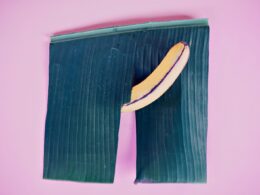If you are struggling to conceive, it is important to get your semen analysis done early. This test will help you determine your sperm volume, sperm count and sperm morphology. It will also give you a sense of what treatment options may be best for your situation.
This test is usually the first step in a fertility evaluation. It can detect a wide range of conditions and health problems that affect fertility in males and others who produce sperm.
Costs
Typically performed by men who are having fertility issues, a semen analysis is one of the first steps in understanding the cause of the problem. This test consists of collecting a sample of the man’s ejaculate in a sterile container through masturbation. A medical professional is available to help the patient collect the sample, which must be done under hygienic conditions. The container must be sealed tightly, and lubricants must not be used because they may contain chemicals that are toxic to sperm. The semen sample is then analyzed with a state-of-the-art computer-integrated microscopic analyzer.
The test includes a macroscopic evaluation of the pH and volume of the semen, as well as a microscopic assessment of sperm morphology, motility, velocity, and sperm count. This data helps the physician identify the underlying causes of male infertility. The test can also indicate if there are diseases or abnormalities in the reproductive tract that interfere with normal sperm production.
Other tests that can be performed on the semen include DNA fragmentation testing, which looks for breaks in a couple’s genetic material. This test is not performed routinely and can cost up to $500, but it can be useful in determining the cause of infertility. Semen samples can also be stored for future use in artificial insemination. This is an option for couples who want to avoid the cost and inconvenience of undergoing multiple fertility tests.
Insurance
A semen analysis is an important part of a male fertility evaluation. It measures a variety of factors, including the number and quality of sperm and their motility. It also tests the integrity of sperm DNA. The results can help diagnose infertility issues and make recommendations for treatment. In addition to semen analysis, men with fertility problems may need other tests such as a hysterosalpingogram (echocardiogram), testosterone levels, and urodynamics.
Semen analysis can be done by a health care provider or at home with kits that include the supplies needed to collect a sample. However, there are limitations with these self-collection tests. They can only provide limited measurements, and they don’t offer the full picture that a physician-ordered test provides.
While a semen analysis can be intimidating, it is important to get one early. This will allow you and your partner to determine the cause of infertility sooner. If you wait to have a semen analysis, you may waste money and time on treatments that don’t work.
A sperm analysis can be covered by most insurance plans. This includes private and Medicare. However, there are some exceptions to coverage. It’s best to check with your insurer for specifics, as there are often many variables that can affect cost and coverage. Those who have high deductibles can often save on these tests by purchasing them directly through MDsave.
Out-of-pocket expenses
A semen analysis, also known as a spermogram or seminogram, is an important part of a male fertility workup. It can help doctors determine the cause of infertility and develop an appropriate treatment plan. It also helps doctors confirm the results of a vasectomy. A sperm analysis can be performed at any age, but it is especially important for men over the age of 45.
The sperm analysis process involves collecting a sample of semen and analyzing it under a microscope. The sample is usually collected by masturbating into a clean, sterile container. It is recommended that men abstain from ejaculating for a few days before the test. This will help ensure that the sample is free of bacteria from the skin, which could affect the accuracy of the results.
In addition to determining the number of sperm present, the sperm analysis also evaluates the morphology and motility of the sperm. The sperm count should be between 20 million and 200 million per milliliter of semen, while the motility should be at least 40%. The morphology of the sperm should be oval-shaped and free of irregularities.
Some men may be hesitant to have a sperm analysis due to the fact that it requires them to masturbate. However, the benefits of this test far outweigh any discomfort. Anxiety over the procedure can lead to inaccurate results and delay the start of treatment.
NTMIC
NTMIC, based in Frisco Texas, is one of the top-rated laboratories for male fertility testing. It offers a comprehensive test that includes a sperm count and a sperm morphology evaluation. This is an important step to diagnosing and treating male infertility. This is because up to half of couples who cannot conceive have issues with their sperm.
A sperm analysis is a unique laboratory test that measures the number of sperm present in the ejaculate. In addition, the lab determines the sperm motility and the shape or morphology of sperm cells under a microscope. A normal sperm count is between 20 million and 200 million sperm per milliliter of semen. The sperm morphology evaluation examines the size and shape of a sperm’s head, neck, midpiece, and tail. Abnormally shaped sperm are less likely to fertilize eggs. A sperm morphology score lower than the median correlates with reduced egg penetration ability.
In addition to sperm counts, a sperm analysis will look for abnormal DNA breaks, which are often associated with infertility. This test is also known as DNA fragmentation, and it requires specialized equipment that isn’t usually available at routine labs. It can be expensive, but it is a key part of determining the cause of a man’s infertility.
Men undergoing a sperm analysis should not engage in sexual activity that may lead to ejaculation for two or more days prior to the test. If they do choose to collect a sample, they should use a condom and avoid store-bought lubricants or spermicides. Those who do not have access to a private room should use a kit that allows them to collect a sample at home.





